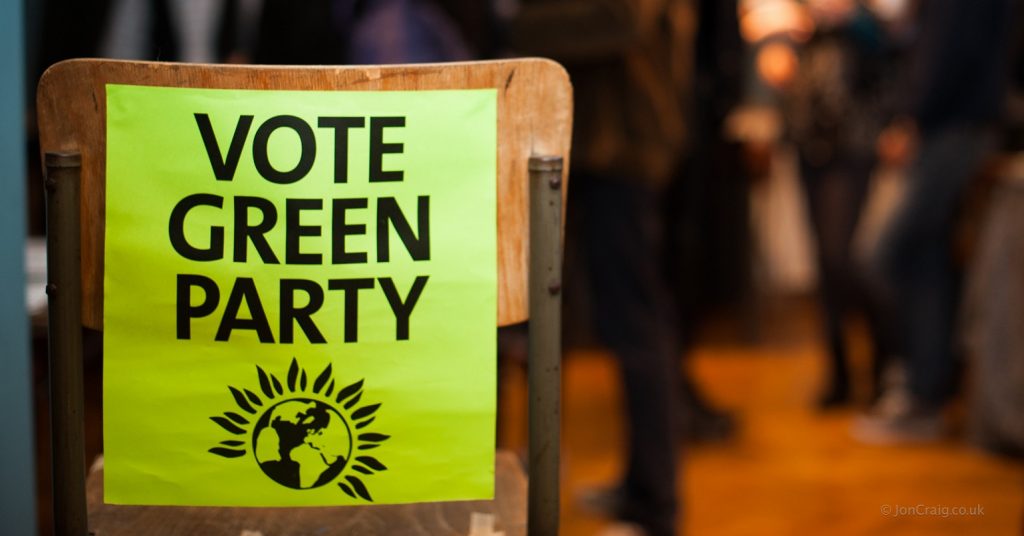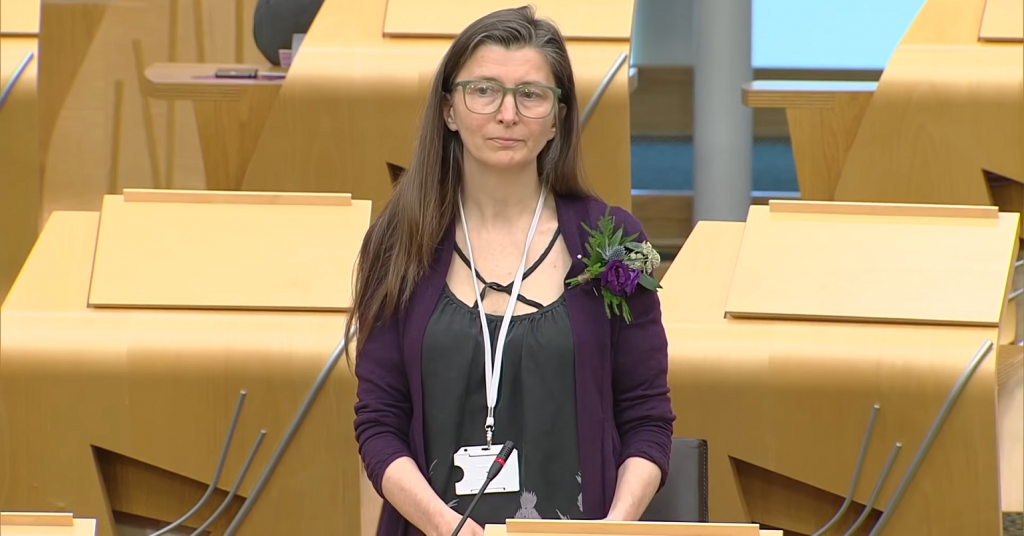Conference shows Scottish Greens are a force to be reckoned with
Last Thursday, the people of Clacton dealt a massive blow to the establishment by voting UKIP and… re-electing their former Tory MP. After having the media spotlight on them for such a long time, receiving massive quantities of money from various wealthy donors, and having a number of public school-educated Tories defect and join their numbers, UKIP is now ready to enter Westminster with their first MP. (Four and a half years behind the Greens, I might add.) If UKIP isn’t part of the establishment, I don’t know what is.
If you wish to see a party that truly represents an alternative to politics as usual, one that is increasingly becoming a force to be reckoned with, you could do worse than to leave Clacton behind, and with it ‘the purple menace down south’ (as Patrick Harvie has called it) and head about 400 miles north to Edinburgh, where the Scottish Green Party held their conference over the weekend.
 I attended this conference—the party’s largest ever by far—as one of the delegates from the Green Party of England and Wales, and it was fantastic to see the future for the Scottish Greens looking so bright. Though the Greens in England and Wales are enjoying a green surge of our own, it is nothing in comparison to the Scottish Greens, whose membership has skyrocketed from 1700 to over 7000 in the space of a few weeks since the Scottish referendum. And while increasing four-fold in such a short time could easily have thrown the party into turmoil, the Scottish Greens look well positioned to make the most of this golden opportunity, with the possibility of gaining a seat in Westminster next year, and in all likelihood multiplying manifold its representation in the Scottish Parliament in 2016.
I attended this conference—the party’s largest ever by far—as one of the delegates from the Green Party of England and Wales, and it was fantastic to see the future for the Scottish Greens looking so bright. Though the Greens in England and Wales are enjoying a green surge of our own, it is nothing in comparison to the Scottish Greens, whose membership has skyrocketed from 1700 to over 7000 in the space of a few weeks since the Scottish referendum. And while increasing four-fold in such a short time could easily have thrown the party into turmoil, the Scottish Greens look well positioned to make the most of this golden opportunity, with the possibility of gaining a seat in Westminster next year, and in all likelihood multiplying manifold its representation in the Scottish Parliament in 2016.
This sense of a party on the rise was apparent from the very beginning of the conference. Following two inspirational speeches from the co-convenors of the party, Maggie Chapman (you can read her speech in full here) and Patrick Harvie MSP, Patrick broke the news of the newest member of the Scottish Green Party, none other than the independent MSP John Finney! Though he will continue to occupy his seat as an independent, this is equivalent to the Scottish Greens increasing representation in the Scottish Parliament by 50%, and thus a landmark moment for a growing party. It hardly needs saying that this news was greeted by a standing ovation from conference.
Throughout this conference, the spirit of the referendum was clearly visible. The Scottish referendum has done wonders engaging the people of Scotland in politics, many for the first time, and that was something that definitely showed. There were various fringes discussing different aspects of the referendum, with a fringe organised by Common Weal focusing on how to continue to engage people in the discussion of how to work towards a better country, and another examining the future of the Greens—and collaboration with other political parties—in the wake of the referendum. The Scottish Greens have greatly benefitted from the opportunity to lay their vision for a better Scotland that the referendum has provided. But at the same time, there was a definite understanding that the referendum now lies in the past. Patrick Harvie spoke about the need to reach beyond the dividing line between the 45% who voted for independence and the 55% who voted to remain in the union, while continuing the fight for a greener and fairer Scotland, and a motion was passed unanimously to accept the result of the referendum.
This wasn’t the only motion up for a vote, of course. Conference voted in favour for workers to have the right to buy out their companies to form cooperatives, for a pay ratio for workers in a company, to unambiguously support trade unions, to expand Scotland’s railways, to oppose the third Iraq War and to support the people of Rojava in their struggle against ISIS. My main disappointment was that the motion in favour of free public transport was voted down. This would have heralded a transformation in transport akin to that the NHS brought to health care, while massively reducing the carbon foodprint of society by decreasing reliance on the motorways, so it was a great shame to see it fall. However, it was voted down by such a small majority I would be surprised if it isn’t on the agenda again before too long.
As a Young Green myself, it was fantastic to see so much hope for the Scottish Young Greens. There are now more Scottish Young Greens then there were members of the Scottish Green Party just a month ago, and with a third of the party now being Young Greens, that brings incredibly exciting opportunities. The Scottish Young Greens are currently looking at a complete overhaul of their structure to fit these new members, introducing regional branches for the first time. I look forward to working across the border with the Scottish Young Greens as they become an increasingly significant force within the Scottish Greens.
What proved to be a fantastic conference ended in much the same way as it started: with the announcement of new members. But this time, it was all the new members who had joined over the weekend. Following a lovely speech from Alison Johnstone, she announced that 150 people had joined the party since the start of conference, making the membership figure 7057 in total. Not bad at all for a party that had less than 2000 members not too long ago. As Patrick Harvie said, the Scottish Greens ‘shouldn’t be satisfied with being a small party’—the time has come to seize the opportunity and become a political force to be reckoned with.






Leave a Reply